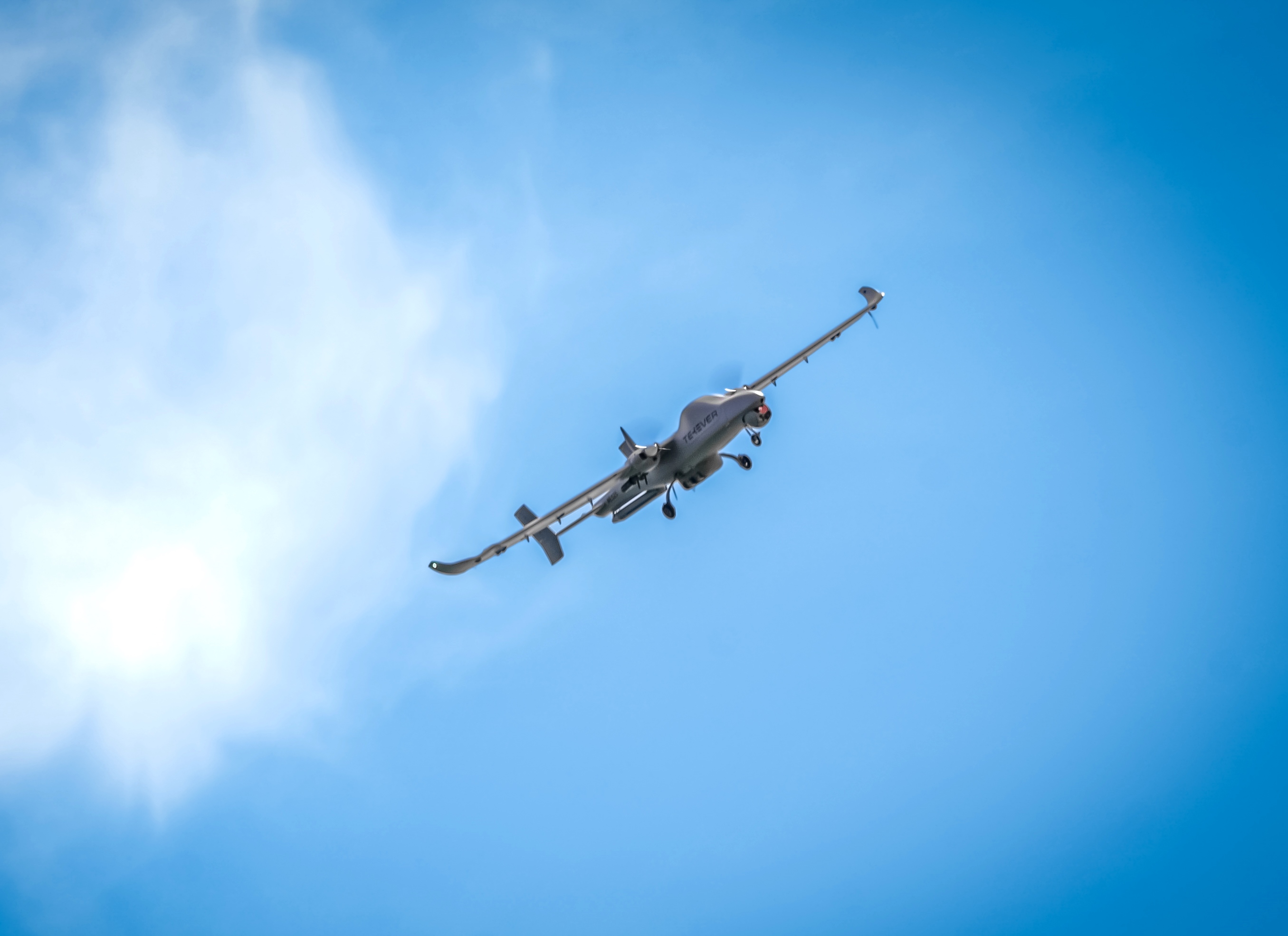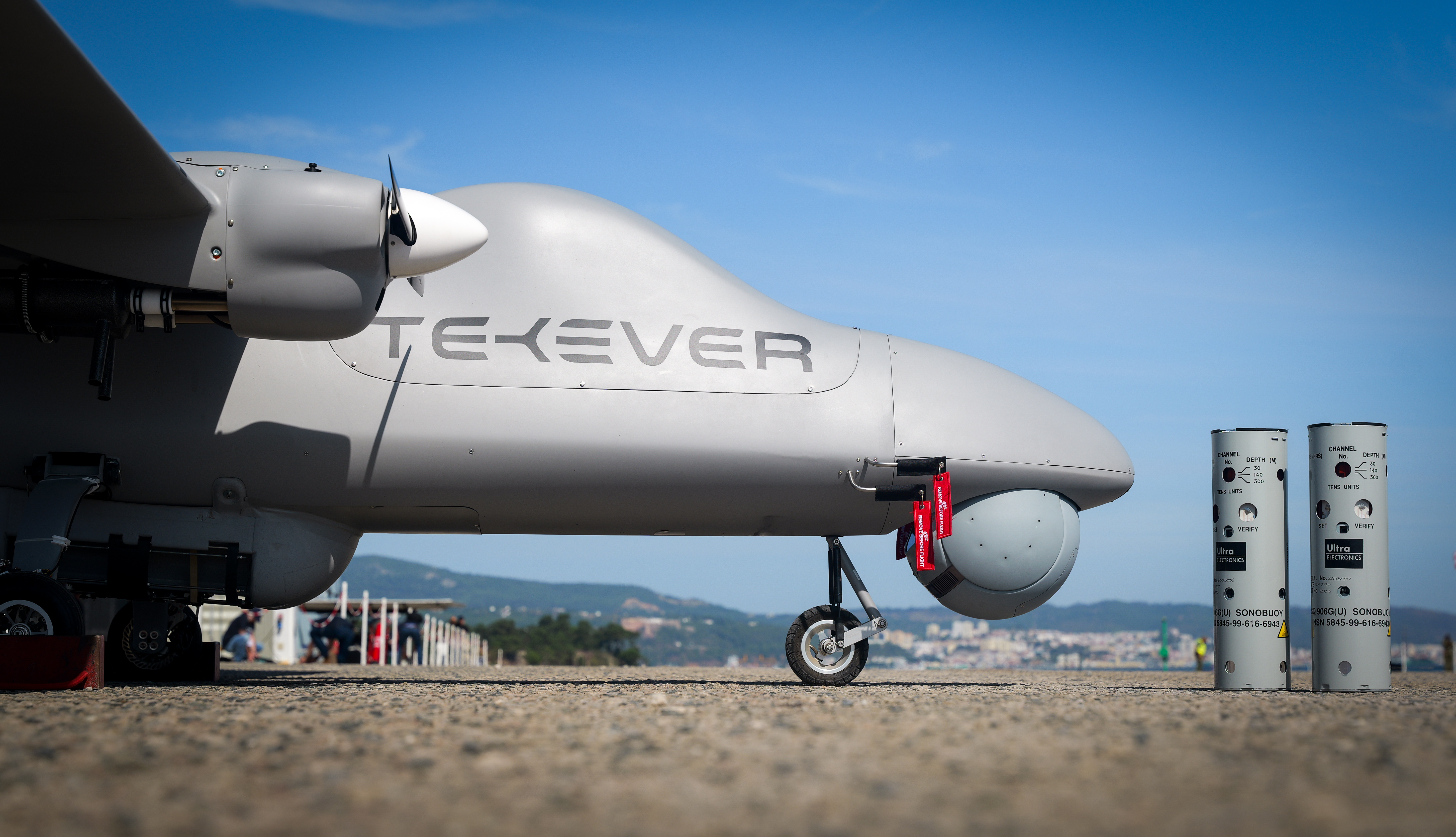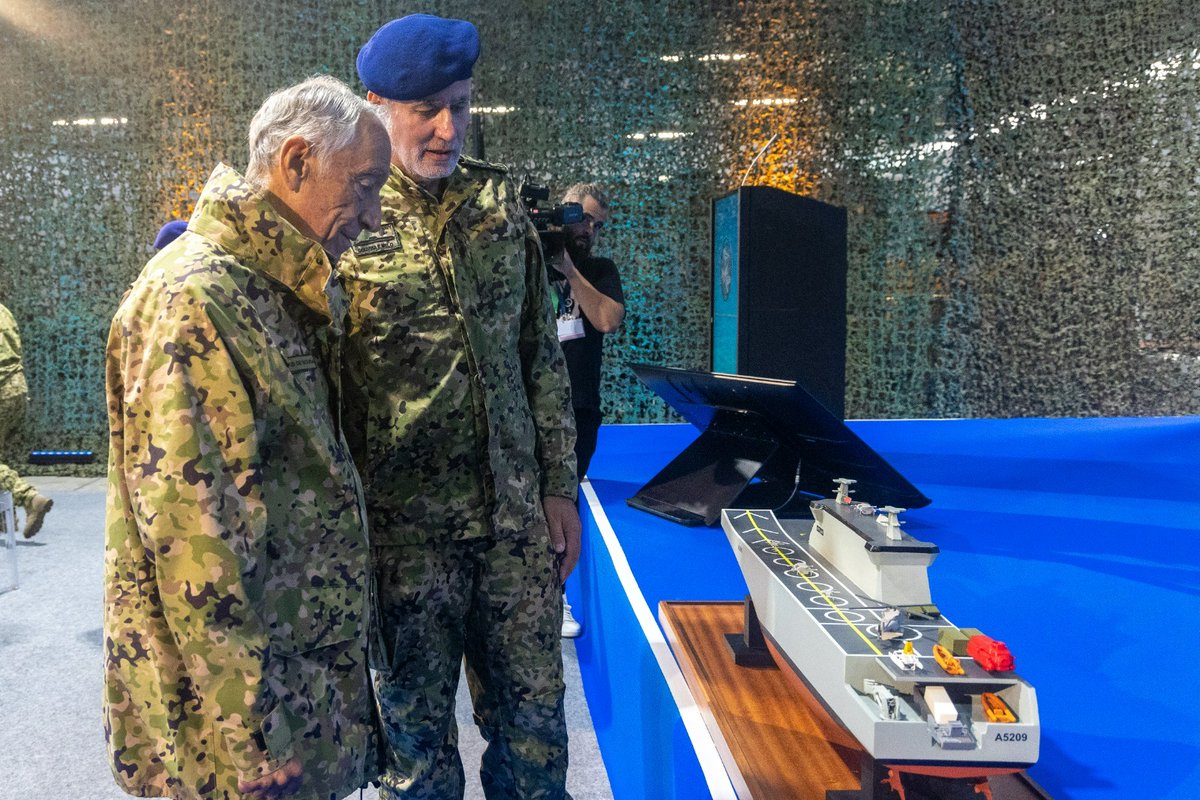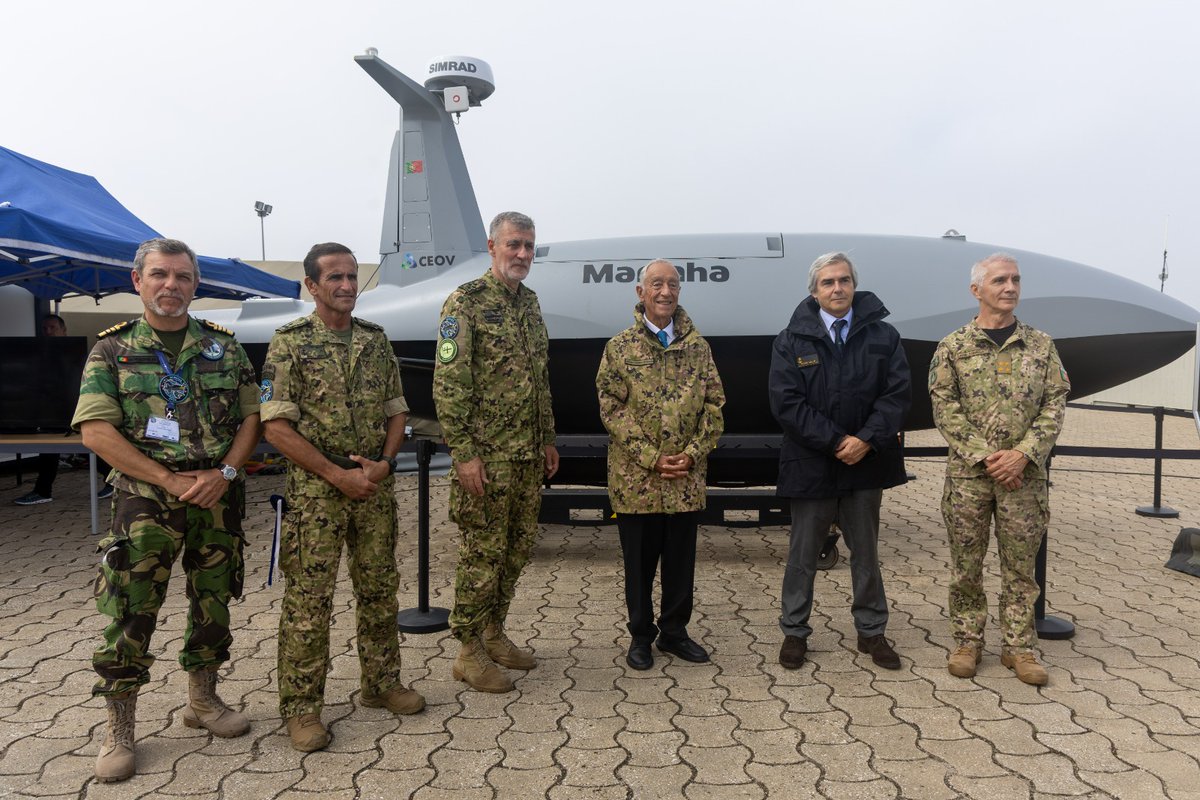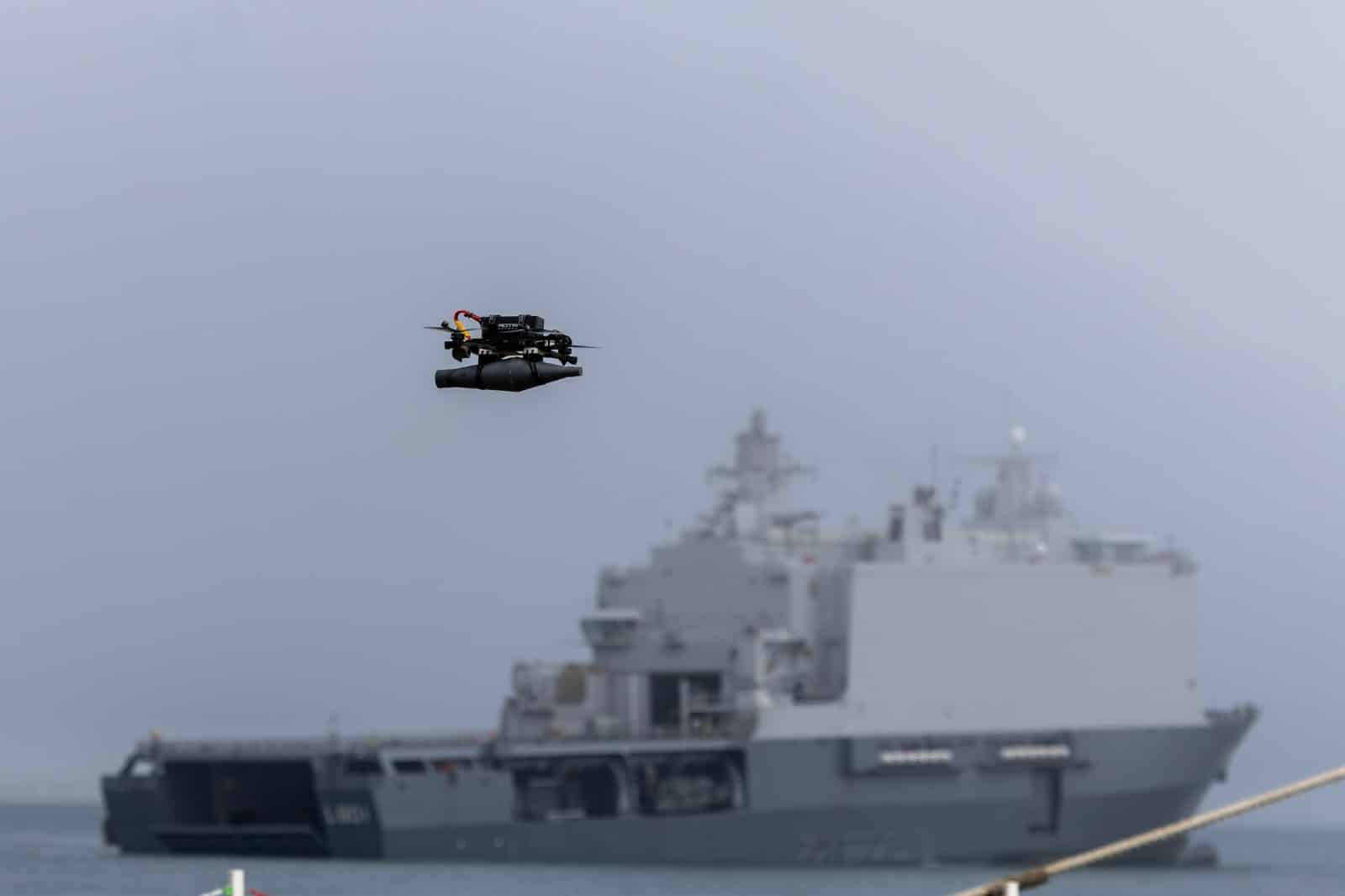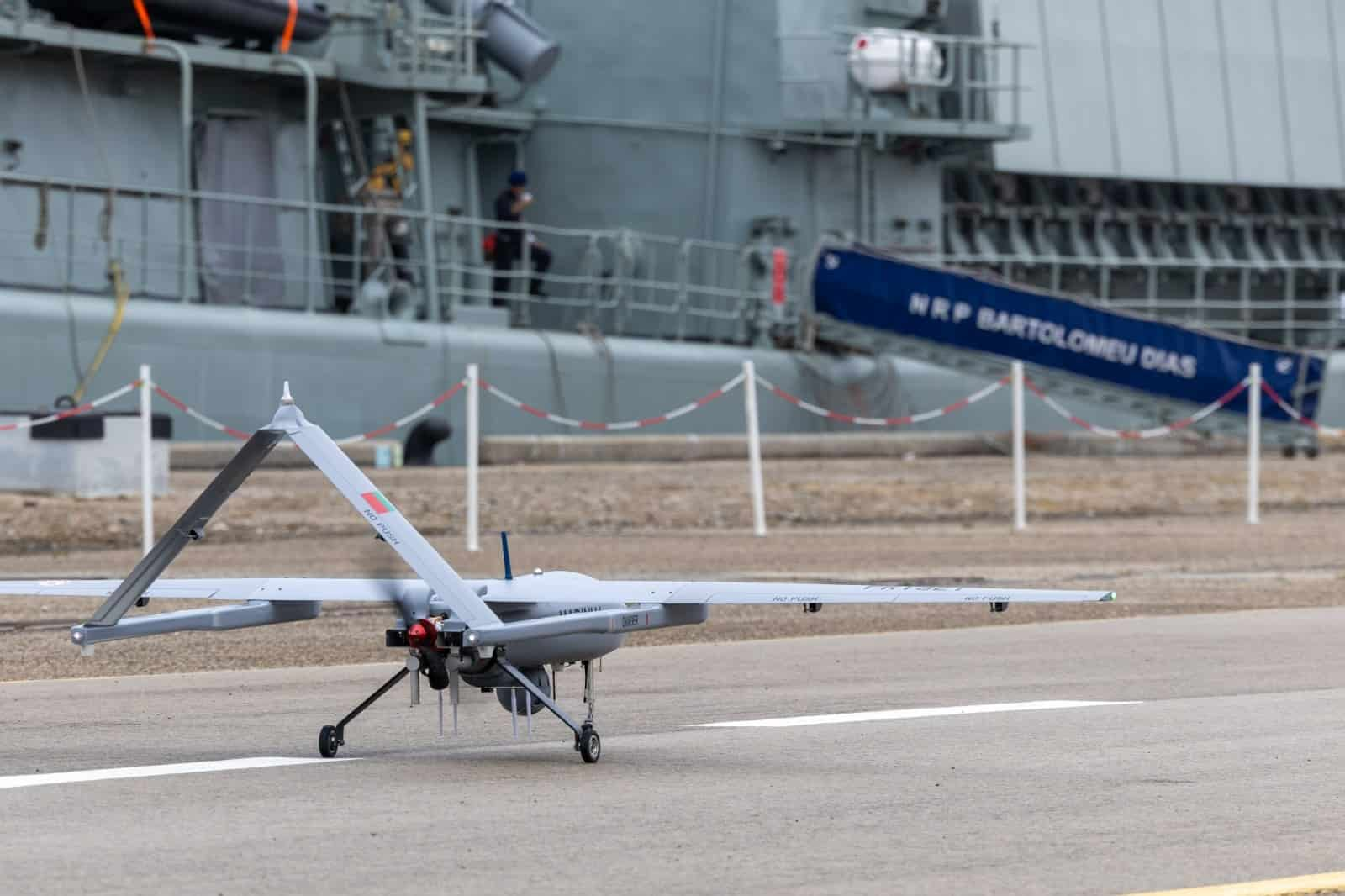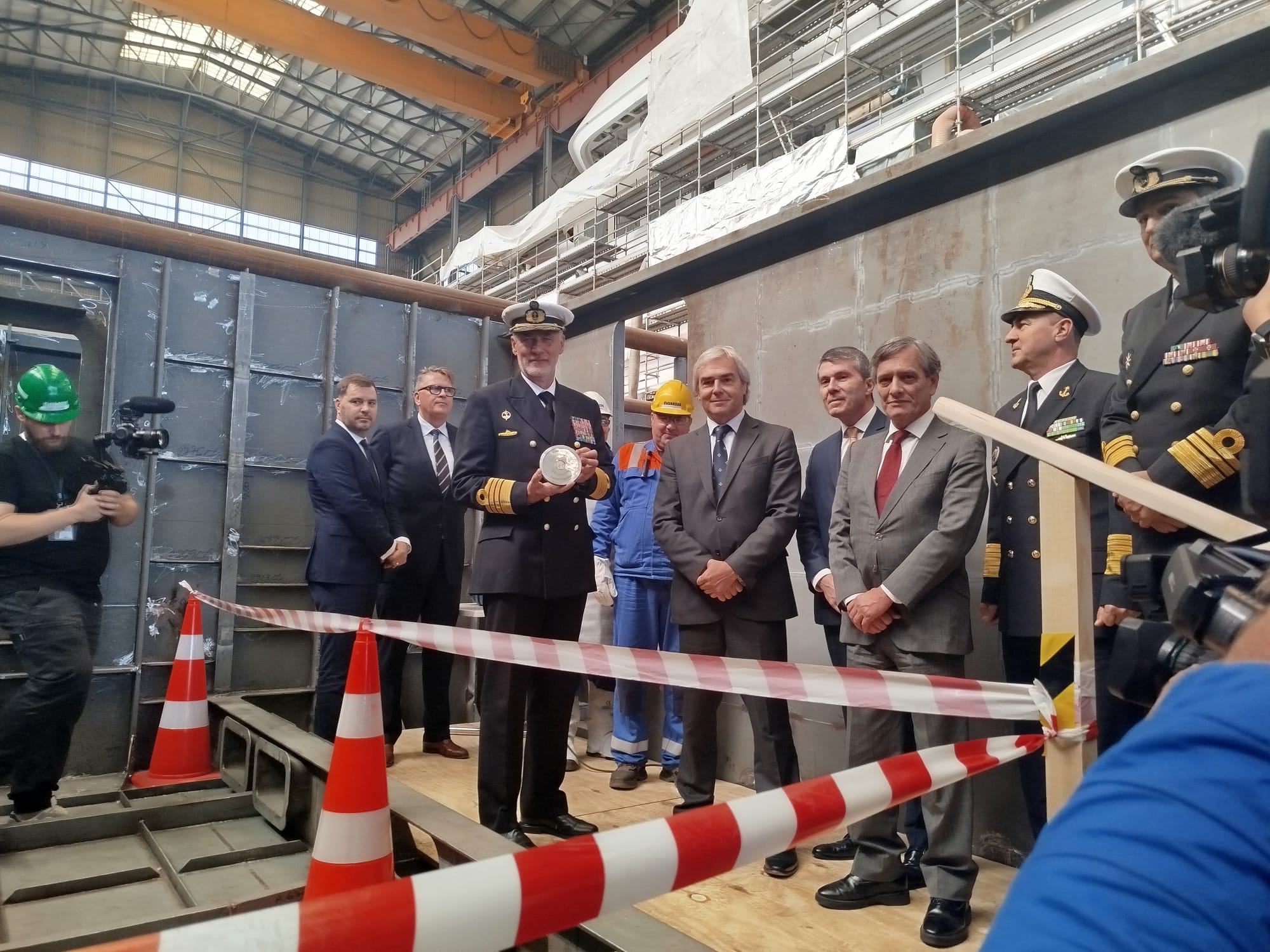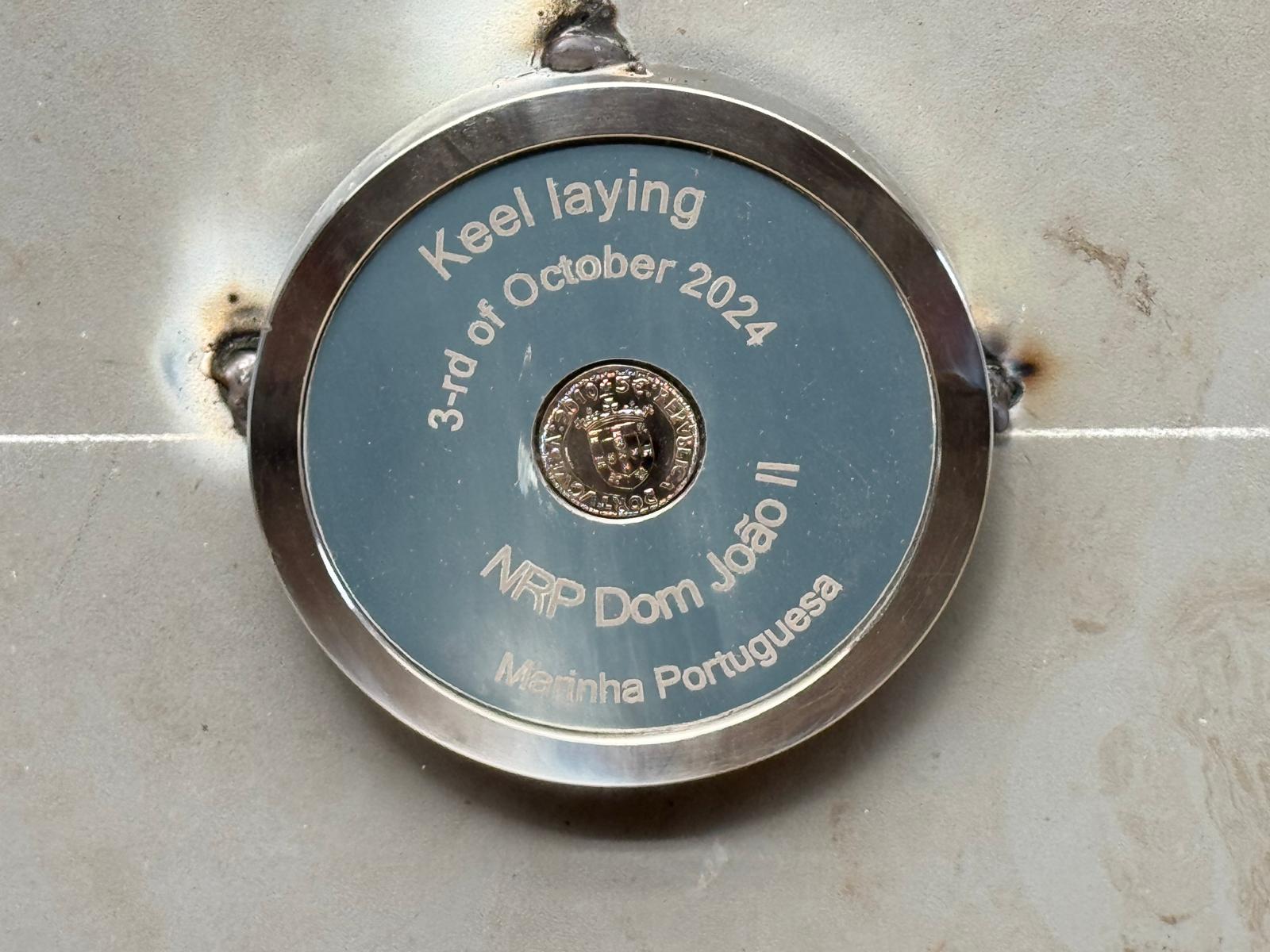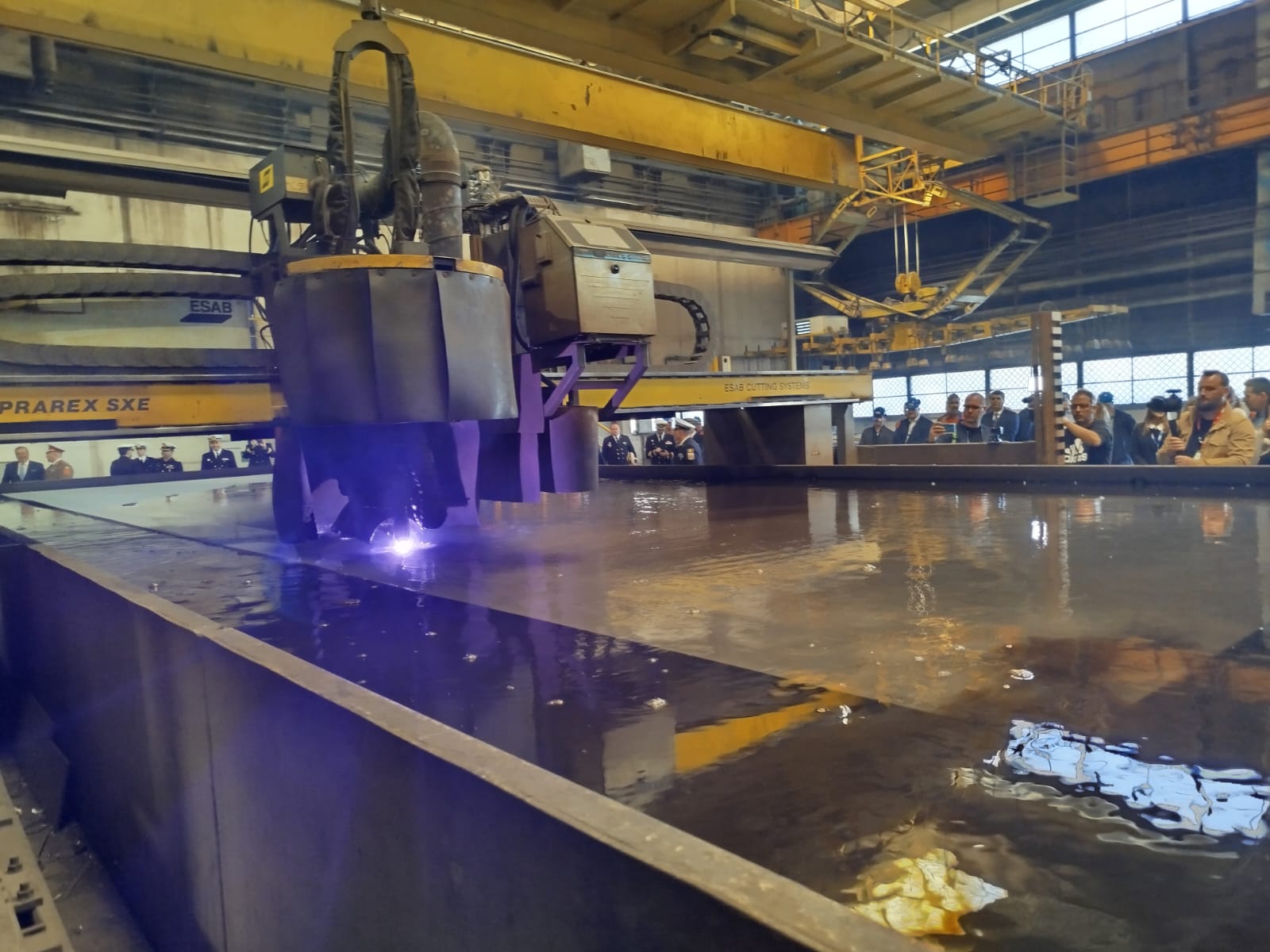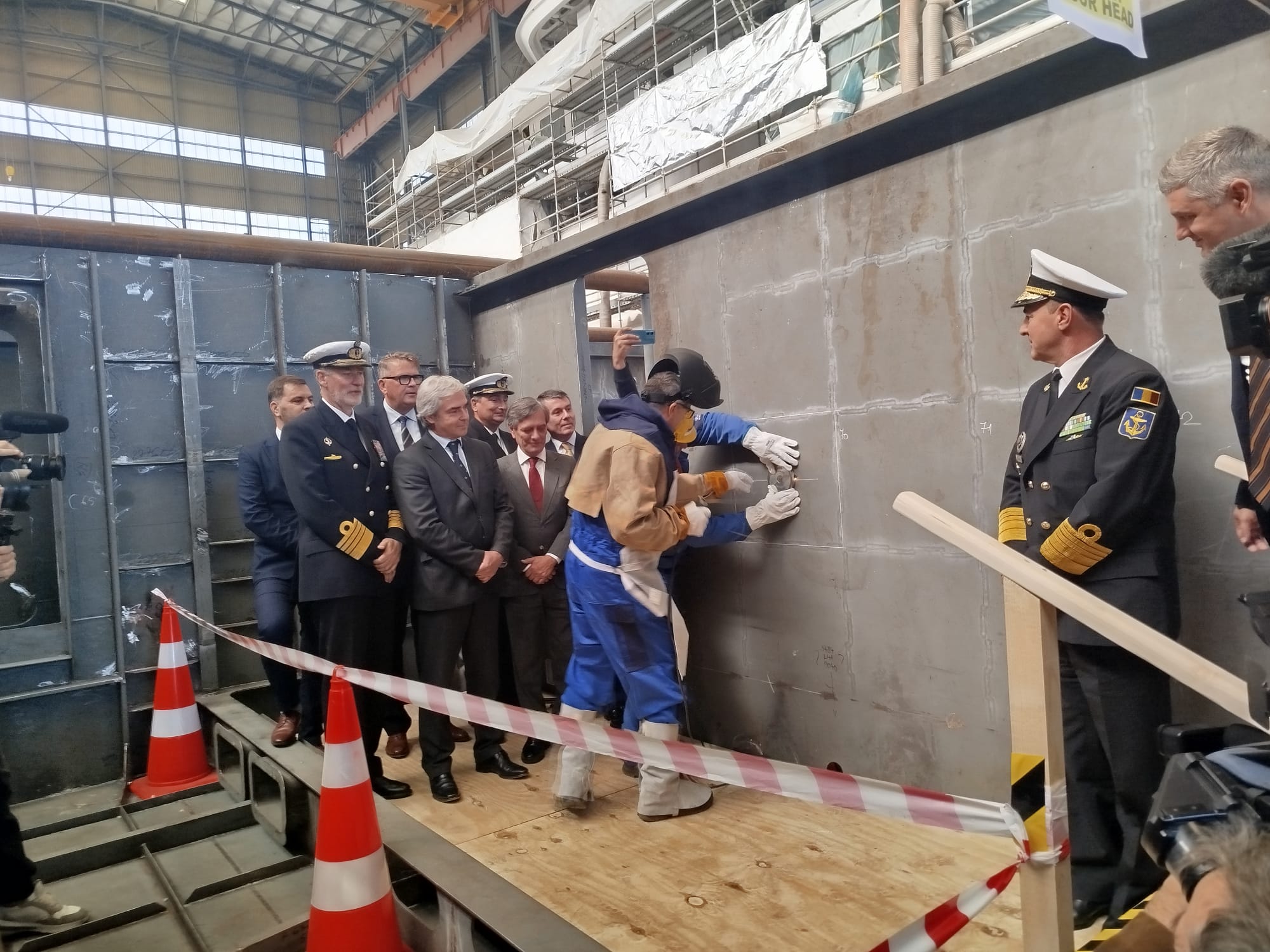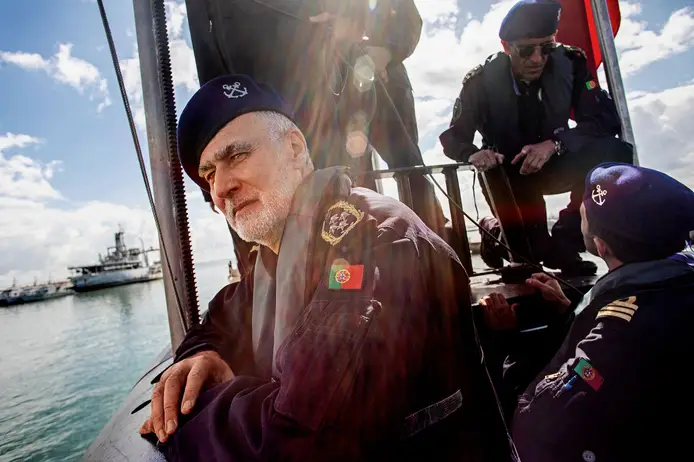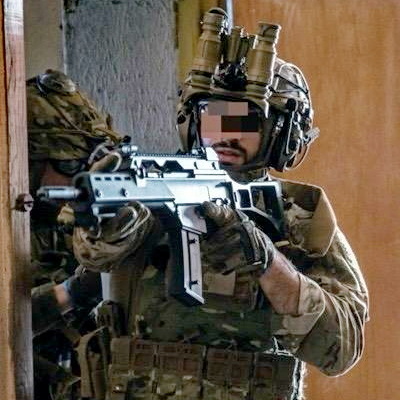Portugal’s First Under-ice Patrol Demonstrated Importance for NATO of Conventional Submarine Operations in Arctic
The Portuguese Navy’s first deployment of a submarine to the Arctic – and under the Arctic ice – earlier in 2024 demonstrated the key contribution diesel-electric submarines (SSKs) can make to NATO underwater operations in the region, the navy has told Naval News.
 The Portuguese Navy conventional submarine NRP Arpão is pictured during its 70-day Operation ‘ARCTIC 2024’ deployment. This was the first time the navy had deployed a submarine to the Arctic. Source: Portuguese Navy.
The Portuguese Navy conventional submarine NRP Arpão is pictured during its 70-day Operation ‘ARCTIC 2024’ deployment. This was the first time the navy had deployed a submarine to the Arctic. Source: Portuguese Navy.
The navy also provided insight into the preparations required to enable a submarine – particularly an SSK – to conduct such adeployment. Preparations included capability augmentations, mission planning, and logistics.
The Portuguese Navy’s Type 209PN Tridente-class SSK NRP Arpão conducted a 70-day deployment from home to the Arctic. Under Operation ‘ARCTIC 2024’, the deployment was designed to “operationally explore this kind of submarine in this specific part of the Atlantic Ocean”, Admiral Henrique Gouveia e Melo, Portugal’s Chief of Navy, told Naval News.
The deployment was conducted in two phases. The first phase saw Arpão spend 22 days supporting NATO’s Operation ‘Brilliant Shield’, a standing activity designed to reinforce alliance deterrence and defence across the Euro-Atlantic theatre. For the second phase, the submarine operated inside the Arctic Circle, both in the marginal ice zone (MIZ) and under the ice shelf.
In between the two phases, Arpão carried out an important part of the deployment – a port call in Nuuk, Greenland. Here, pre-planned maintenance was carried out on the boat, while the ship’s company completed final mission planning and training preparations for operating under the ice. The requirement for a port call illustrated both the challenges of conducting maintenance and replenishment at distance in a remote location, and the importance of working with regional allies in completing these tasks.
Preparation
 Arpão crew members are pictured onboard during the deployment, along with Admiral Henrique Gouveia e Melo, Portugal’s Chief of Navy (second left). Pre-deployment training for the crew encompassed safe operation of the submarine, optimising the boat’s tactical positioning, and maximising effective use of its sensors. Source: Portuguese Navy.
Arpão crew members are pictured onboard during the deployment, along with Admiral Henrique Gouveia e Melo, Portugal’s Chief of Navy (second left). Pre-deployment training for the crew encompassed safe operation of the submarine, optimising the boat’s tactical positioning, and maximising effective use of its sensors. Source: Portuguese Navy.
Prior to deploying from Lisbon on 3 April, Arpão underwent an enhanced maintenance period to prepare for the nature of the Arctic’s operational environment.
“The physical presence of the ice shelf escalates the danger of collision with an ice keel, and strictly hinders the submarine’s choices when surfacing or going to periscope depth for communication or other purposes. Consequently, adjustments consisted of installing protective barriers on the top part of the sail to protect the masts from ice overhead when returning to periscope depth, and installing a high-frequency sonar for the purpose of detecting and mapping the ice ceiling.” Captain Baptista Pereira, the navy’s Submarine Force Commander.
Arpão’s crew also had undergone a seven-month planning and preparation period, prior to sailing. “[The deployment] would oblige the crew to learn new procedures and courses of action with the aim of becoming accustomed to a new environment,” the navy said. ‘Brilliant Shield’ provided the opportunity to test and adjust these procedures and actions, plus the new capabilities, before heading into the ice, it added.
Operating environment
 Arpão is pictured in waters illustrating the challenges of operating submarines in the Arctic region. The boat’s area of operation moved from the open sea to the marginal ice zone to the ice shelf. Source: Portuguese Navy.
Arpão is pictured in waters illustrating the challenges of operating submarines in the Arctic region. The boat’s area of operation moved from the open sea to the marginal ice zone to the ice shelf. Source: Portuguese Navy.
Following the Nuuk port call, Arpão sailed for the ice on 28 April, escorted by the Royal Danish Navy’s Knud Rasmussen-class Arctic patrol ship HDMS Ejnar Mikkelsen.
Essential to the final planning alongside in Nuuk was working with the US Navy’s Arctic Submarine Laboratory scientists and ice pilots and with Denmark’s Joint Arctic Command (headquartered in Nuuk), to examine the area’s latest ice charts, evaluate up-to-date ice shelf movements, and refine procedures and navigation plans accordingly, the navy said. These partners, plus others like the Royal Canadian Navy, “provided much-needed vital support to complete this demanding assignment, as they comprehended the complexity of normalizing the operation of [submarines] in the Arctic Circle’s MIZ”, Admiral Melo noted.
The navy described the complexities in the operating region created by the ice coverage and the underwater acoustic picture, and how both are continuously changing. This complexity creates challenges for safe operation of the submarine, its optimal positioning for tactical effect, and effective use of its sonar’s sensing capability. Training to operate in the region covered each aspect, Commander Taveira Pinto – Arpão’s Commanding Officer (CO) – explained to Naval News.
“The conditions would demand a change in operating procedures and techniques that are second nature to the crew, such as clearing baffles and returning to periscope depth.” Commander Taveira Pinto – Arpão’s Commanding Officer.
As regards navigational safety, as the MIZ is the intersection between the open sea and the ice shelf it features a mix of free-floating, different types of ice blocks including icebergs.
The boundary area between the MIZ and the ice shelf is characterised by significant noise caused by breaking ice and marine mammals. These sounds reduce once under the ice.
Under the shelf, however, the operational challenge increases because the ice below the surface is much thicker. Here, Arpão’s crew was trained to monitor ice thickness and movement, and to map Polynyas – natural openings in the ice that can be used for raising a periscope or for surfacing. A particular requirement for the crew to master was static surfacing through such openings, to reduce risk of ice collision.
The Arctic’s changing climate also is affecting submarine positioning and control.
“Achieving optimal ballast conditions was … especially demanding in this specific environment, since the melting ice creates a relatively fresh and low-density surface layer, which could cause significant ballasting difficulties.” Cmdr T. Pinto.
One of the most significant impacts of climate change on Arctic submarine operations is in the use of sonar. While a submarine’s attack team will seek to maximise the sonar’s search capacity under the ice, the water temperature and salinity density – plus the ice presence – complicate sonar optimisation. As regards temperature and salinity, the addition of fresh water from the melting ice has made salinity gradients and sound velocity profiles more unpredictable for sonar operators. The ice shelf itself causes sonar reverberations, and the noise created by moving ice also masks potential contacts.
Operational impact
 NRP Arpão (Credit: Danish Arctic Command)
NRP Arpão (Credit: Danish Arctic Command)
Arpão’s presence around and under the ice was also divided into two phases, the navy explained.
“The first phase was devoted to substantiating every new procedure concerning ice sailing, and allowing the crew to become comfortable and proficient operating in a formerly unknown environment. The second phase was dedicated to exploiting an SSK’s capabilities tactically and operationally under the ice shelf.” Cmdr T. Pinto.
In the latter instance, the boat spent four days under the ice, the navy added. Capt Pereira said deployments like Arpão’s were operationally significant in the region.
“Due to the ice cover, this area can be considered a safe haven for nuclear-powered submarines … [hiding] from surface units or aircraft. However, the regular presence of the more silent SSKs would be a gamechanger in underwater warfare in the Arctic region.” Commander Taveira Pinto
In a statement issued by NATO’s Allied Maritime Command (MARCOM) as the submarine returned home, then-Commander, Submarines NATO (COMSUBNATO) Rear Admiral Thomas Wall said “During this mission, Arpão was tasked with monitoring non-NATO military platforms, both surface ships and submarines, known to operate in this region.”
“We successfully achieved our objectives of surveillance and patrol in the North Atlantic, demonstrating the capabilities of this type of conventional submarine in Arctic conditions.” Cmdr T. Pinto
https://www.navalnews.com/naval-news/20 ... rettyPhoto
